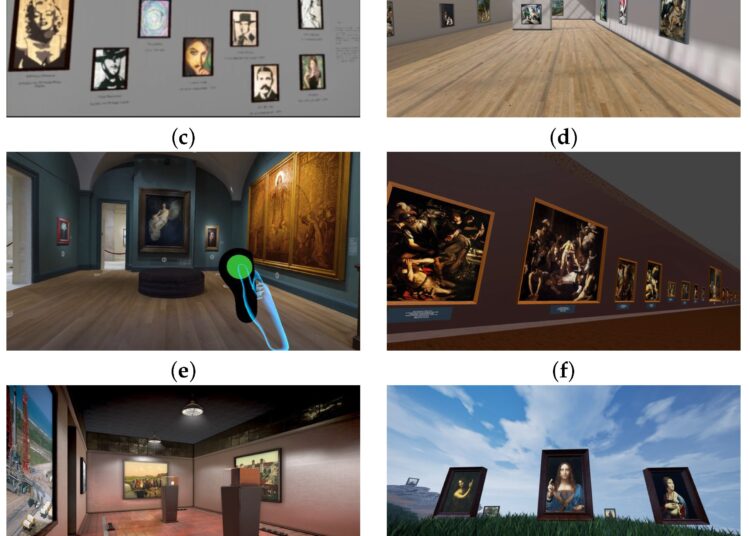This article explores the science behind military simulations and how they have evolved to become more realistic and accurate over time. It discusses the history of military simulations, from early tabletop war games to technologically advanced computer simulations. The integration of virtual reality (VR) technology is highlighted as a significant advancement, allowing participants to experience simulated battlefield scenarios in a more immersive way. The importance of data in creating realistic simulations is emphasized, as well as the role of artificial intelligence (AI), sensor technology, cloud computing, and collaborative efforts in shaping the future of military simulations. The article concludes by highlighting the value of simulations in preparing armed forces for actual combat situations.
The Science of War: Exploring the Realism and Accuracy of Military Simulations
Introduction
Military simulations have been an integral part of training and strategizing for centuries. From ancient war games to the modern, highly sophisticated computer simulations, these tools have constantly evolved to improve realism and accuracy. In this article, we will delve into the science behind military simulations and explore how these simulations are becoming increasingly realistic and accurate.
The Evolution of Military Simulations
Military simulations have come a long way from physical tabletop war games to today’s technologically advanced computer simulations. While the aim has always been to mimic the chaos and uncertainty of the battlefield, early versions of simulations lacked the necessary computational power and data to replicate reality effectively.
The advent of computers changed everything. With increasing processing power and advanced algorithms, simulations started to incorporate more realistic variables such as terrain, weather conditions, weapon capabilities, and the behavior of enemy forces. As technology progressed, these simulations became more immersive, giving military strategists an unprecedented tool to test and refine tactics before deploying them in actual combat situations.
Rise of Virtual Reality
One of the most significant advancements in military simulations is the integration of virtual reality (VR) technology. VR enables participants to virtually enter the simulation, providing a first-person perspective and enhancing the overall realism.
With VR headsets, warfighters can experience battlefield scenarios in a controlled environment, further refining their decision-making skills, and building muscle memory. Additionally, VR simulations allow military personnel to train together in virtual teams, fostering better coordination and communication among soldiers.
As VR technology continues to evolve, we can expect even more realistic and immersive military simulations that closely mimic actual combat scenarios.
Data-Driven Realism
The accuracy of military simulations heavily relies on the availability and accuracy of data. Simulations require extensive research into military tactics, historical battles, enemy capabilities, and current weapons technology to accurately depict reality.
Access to large datasets and advanced machine learning algorithms has significantly improved the accuracy of simulations. Data analytics enables simulations to simulate various outcomes and predict the effectiveness of different strategies and tactics. By analyzing historical data and battle simulations, military planners can make informed decisions and enhance their strategies.
The Future of Military Simulations
As technology continues to advance, we can expect even more realistic and accurate military simulations in the future. Here are some key areas that will drive this evolution:
Artificial Intelligence (AI) Integration
Integrating AI into military simulations can enhance realism by creating intelligent virtual entities that closely mimic human decision-making. By continuously learning and adapting from human player actions, AI participants can provide dynamic and unpredictable responses, making simulations even more challenging and realistic.
Sensor Technology
Improved sensor technology, including advancements in motion capture and haptic feedback, will further enhance the realism of military simulations. These technologies will enable participants to sense and respond to physical interactions within the simulation, adding an additional layer of immersion and accuracy.
Cloud Computing
Cloud computing offers the potential to scale up simulations by leveraging vast computational resources. Simulations can tap into cloud-based platforms, allowing for larger and more complex virtual battlefields with increased realism and accuracy.
Collaborative Simulations
The future of military simulations lies in collaborative efforts between different armed forces, nations, and even international organizations. By combining resources, data, and expertise, simulations can be made more accurate and realistic. Collaborative efforts can also foster better coordination and understanding among different military units.
Conclusion
Military simulations have come a long way in terms of realism and accuracy, thanks to advancements in technology and data-driven approaches. The integration of VR, AI, sensor technology, cloud computing, and collaborative efforts will continue to push the boundaries of what is possible in military simulations. As a result, armed forces worldwide can rely on these simulations to test, refine, and prepare for the challenges of the modern battlefield.













